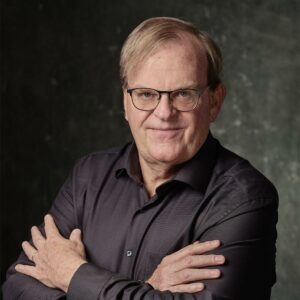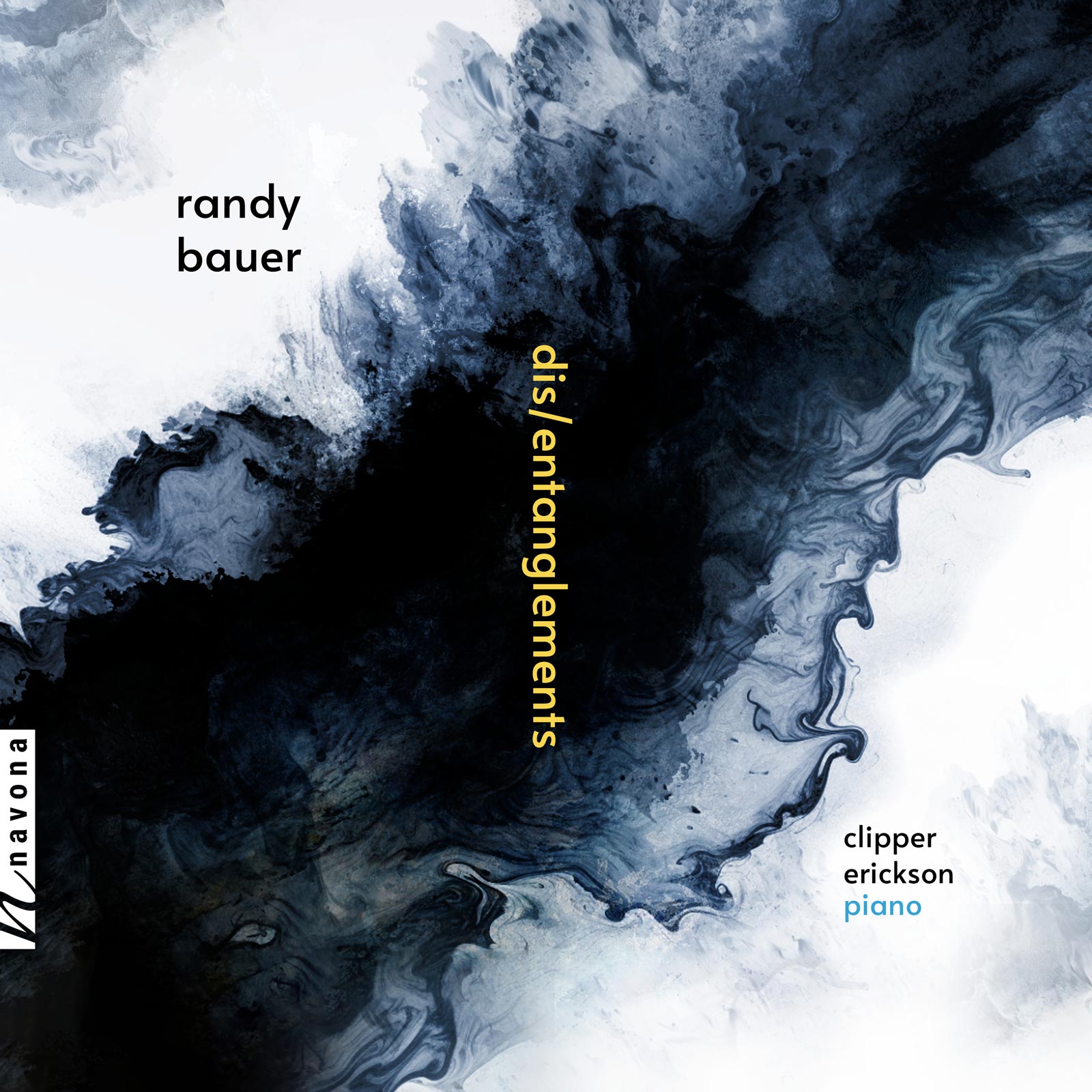Dis/entanglements
Randy Bauer composer
Clipper Erickson piano
Randy Bauer’s DIS/ENTANGLEMENTS is an album featuring two large-scale piano works written during pandemic-era isolation that explore the tumultuous emotions associated with the times. Piano Sonata No. 1: Above the River and Piano Sonata No. 2: Brighter Dreams express Bauer’s struggles with feelings of entanglement and his efforts to free himself from them through music. Composed sequentially, the two sonatas heard together suggest a movement from entrapment to deliverance. Bauer’s works on DIS/ENTANGLEMENTS are deftly performed by the internationally-celebrated pianist Clipper Erickson. Featuring moments of stark tension, reassuring lyricism, and triumphant redemption, DIS/ENTANGLEMENTS resonates with anyone longing for greater freedom.
Listen
Stream/Buy
Choose your platform
Track Listing & Credits
| # | Title | Composer | Performer | |
|---|---|---|---|---|
| 01 | Piano Sonata No. 1: Above the River: The Flood | Randy Bauer | Clipper Erickson, piano | 9:06 |
| 02 | Piano Sonata No. 1: Above the River: The Night Journey | Randy Bauer | Clipper Erickson, piano | 10:32 |
| 03 | Piano Sonata No. 1: Above the River: The Unraveling | Randy Bauer | Clipper Erickson, piano | 3:23 |
| 04 | Piano Sonata No. 1: Above the River: The Triumph | Randy Bauer | Clipper Erickson, piano | 10:03 |
| 05 | Piano Sonata No. 2: Brighter Dreams: Drawing In | Randy Bauer | Clipper Erickson, piano | 10:15 |
| 06 | Piano Sonata No. 2: Brighter Dreams: Rocking, Ever Rocking | Randy Bauer | Clipper Erickson, piano | 8:51 |
| 07 | Piano Sonata No. 2: Brighter Dreams: Flying Higher | Randy Bauer | Clipper Erickson, piano | 7:16 |
Recorded April 15 and 17, 2023 at Mairs Concert Hall, Macalester College in Saint Paul MN
Session Engineer Reid Kruger
Session Producer, Editing, Mixing Randy Bauer
Mastering Melanie Montgomery
Executive Producer Bob Lord
A&R Director Brandon MacNeil
A&R Danielle Sullivan
VP of Production Jan Košulič
Audio Director Lucas Paquette
VP, Design & Marketing Brett Picknell
Art Director Ryan Harrison
Design Edward A. Fleming
Publicity Chelsea Kornago
Artist Information

Randy Bauer
Randy Bauer's works have been performed across the United States and Europe by members of the Minnesota and St. Paul Chamber Orchestras, the Brentano String Quartet, eighth blackbird, Nash Ensemble of London, Zeitgeist, and many others, and has been broadcast on WFMT Chicago and Minnesota Public Radio. He has been a McKnight Foundation Fellow, and a resident artist at Yaddo, the Ucross Foundation, and the Atlantic Center for the Arts. He holds degrees from the Peabody Conservatory and Princeton University, and is on the faculty of Macalester College in St. Paul MN.

Clipper Erickson
Described as “one of the finest pianists of his generation…a consummate musician” by Fanfare, Clipper Erickson has dedicated much of his long career to bringing new works to life. An enthusiastic musical explorer, he has also championed lesser-known works of the past. Erickson made his debut at age 19 in Los Angeles as soloist with the Young Musicians Foundation Orchestra, followed by studies at The Juilliard School, Yale University, and Indiana University. While at Indiana, Clipper trained with the great British pianist John Ogdon, whose dedication to the performance of new music and lesser-known works of the past inspired Clipper to follow in his footsteps.
Notes
The music on this album was composed from Summer, 2020 to Spring, 2021. The entire world was suspended by the pandemic, and for a while musical performance either had to reinvent itself for the internet, or just stop and wait for venues to open up, and people to venture out. Meanwhile, some parkways in my neighborhood were barricaded to allow for “socially distanced” walking, lines formed outside of grocery stores with strict occupancy limits, and we all basically left each other alone, stuck in our respective bubbles. Helicopter footage shown on the news of completely empty city centers across the world was sobering.
And so, it was time for me to channel this experience into a composition. It was a chance to express becoming mercilessly entangled in a situation, all the while working out a route towards disentanglement.
I had been wanting to write a large work for solo piano (my own instrument), and here was the opportunity. The first sonata is not about the pandemic itself; it’s more a reaction to feeling closed off, stymied, shut in, frozen in place – things we were all feeling. It expresses chaos, but also creates order out of that chaos, by intentionally casting the piece in a very traditional, tautly regulated form – the four-movement sonata. It is in part a musical representation of feeling trapped, but also a paean towards being released.
Like just about all of my recent works, it also reflects my children (aged 1 and 3 when this all started), and how this period of relative isolation might have been impacting them, while also exploring the benefits of all of this family bonding time, through getting to watch them grow and play without so many of my own usual distractions. Despite frequent stridency and density in the piano writing, there’s also much raw, positive, headstrong energy in the piece, that reminds me a lot of my son as he was growing from toddler to schoolkid.
As for the titles: I live next to the Mississippi River, and I’ve experienced its seasonal cycles closely, from spring fury to winter freeze. There are metaphors at work here with the annual ice break-up and subsequent freedom extended to all the entities that the river serves. When life floods, we take refuge “above the river,” and have to trust that after things unravel, we may begin anew and ultimately triumph.
The second sonata was written immediately after the first. Not ever having written two of the same kinds of pieces back to back, I wanted to see where the momentum would lead. I knew that it needed to be different, and it is: less dense, smaller proportions. If the first sonata was about entrapment, the second is more about deliverance.
The first movement, the “drawing in,” reveals the most strident music of the piece, with strong dissonance and a pervasive march-like feel. The second movement abandons this tension, and is a very tenderhearted lullaby. The last movement is like a flowing dance: lyrical and always filled with motion, a steady climb towards optimism. This sonata is also about my daughter, who will fly high as she grows, and I see a lot of her personality in the piece. The lullaby is especially for her.
— Randy Bauer

